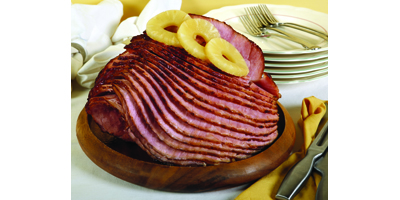Because I always bake ham for Easter dinner, as did my Scottish mother, I was surprised to learn that lamb, not ham, is the traditional Easter dish throughout the British Isles, including Scotland.
Lamb is also widely favoured in much of the rest of Europe. It’s on the Easter menu in Italy, Sweden, France, and Germany. In Hungary, there’s a choice — ham or lamb.
Interestingly, as we move eastward, ham shows up on many Slavic tables — in Poland, Russia and Ukraine, for example. In these countries, there’s also always sausage.
No Easter feast today can surpass what once was the Russian norm. Forty-eight different dishes — one for each day of the Lenten season — were offered for Easter dinner.
Eggs appear wherever Easter is observed. This tradition arose from the ancient rule forbidding eggs during Lent. The end of Lent meant eggs could again be enjoyed.
Because of Manitoba’s sizeable Ukrainian population, everyone knows and loves the beautiful Ukrainian Easter egg — the pysanka. And anyone who has traveled the Yellowhead into Alberta, has stopped at Vegreville to admire the biggest pysanka in the world.
Pysanky is the plural of pysanka. The word comes from the Ukrainian verb, pyaty (to write). The idea of “writing” springs from the wax-resist method used to create these eggs. They are, in effect, decorated via writing on the egg.
Pysanky are older than Christianity. The same symbols and designs found on a modern Ukrainian egg can be seen on an ancient one. But since pysanky are now Christian eggs, the meanings of the symbols have undergone change. For example, if you could find a pre-Christian pysanka, you might notice a cross thereon. Back then, that cross represented the rising sun. Today, a cross on a pysanka symbolizes the risen Christ.
Some type of Easter bread is yet another must in many countries. Hot cross buns, a British tradition, are served Good Friday. They’re decorated with a cross to remind us that Jesus died on a cross on the first Good Friday.
Nothing can beat the Easter bread made by Slavic cooks. This tall yeast-bread, rich in eggs, often boasts saffron as an ingredient. The bread goes by many names: Paska and Babka in Polish and Ukrainian, Kulich in Russian, Kozunak in Romanian, Houska in Czech.
Why ham is considered an Easter dish is a mystery, but lamb is probably a nod to the Paschal Lamb — Christ. This term was lifted from the Jewish Passover where it refers to the sacrificial lamb traditionally killed for the Passover Seder and is reminiscent of the original sacrifice when the Jews fled Egypt. Christianity applied the term to Jesus — the sacrificial lamb of God.
We hear the echo of Paschal and Passover in other words associated with Easter. Paska for Easter Bread is a good example. Pasch, itself, is defined by the OED as “Easter.”
Passover and Easter always roughly coincide timewise. Jesus was a Jew and the Last Supper was a Passover Seder. This year, the two religious holidays match exactly. Good Friday is April 3 and Passover begins that same day. Passover ends April 11.
Happy Easter and Passover eating!



